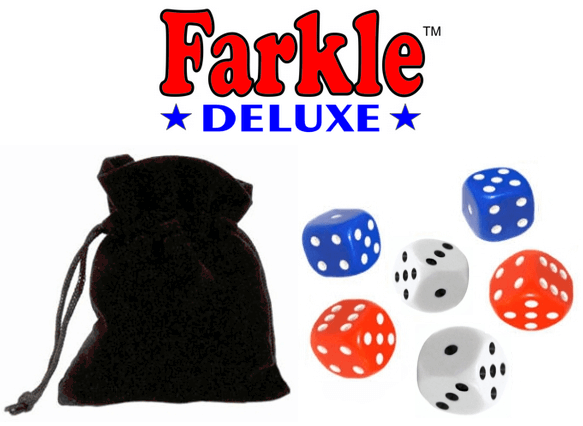

These are the variations listed in the above-cited descriptions of farkle scoring, but further variations presumably exist. Like the standard combinations, any of these variant combinations must be achieved in a single throw.
#PIRATE FARKLE FULL#
A full house (three-of-a-kind and a pair) is scored as the three-of-a-kind value plus 250.In addition, some players score one or more combinations of dice beyond the standard ones. For example, the commercially marketed game of Pocket Farkel differs in that three 1s are scored as 300 rather than 1000. While the standard rules described above are widely used, even they are not universal. Since farkle is a folk game, variant rules are used in different playing communities. For example, if a player has already set aside two individual 1s and then throws a third with the four dice remaining, they do not have a triplet of 1s for a score of 1000 but merely three individual 1s for a score of 300. On the other hand, if they score five dice and have only one die to throw, they have a 1 in 3 chance of scoring a single 1 or a single 5, and then having scored all six dice they will have "hot dice" and can throw all six dice again to further increase their score.Įach scoring combination must be achieved in a single throw. If the player continues throwing, as in any of the above cases except the last, they risk farkling and thus losing all accumulated points. This is not an exhaustive list of plays based on that throw, but it covers the most likely ones. score three 3s, the single 1, and the single 5 for a total of 450 and stop, banking 450 points in that turn.score three 3s, the single 1, and the single 5 for a total of 450 and then throw the remaining die.

score the single 5 as 50 and then throw the remaining five dice.score the single 1 as 100 and then throw the remaining five dice.score three 3s as 300 and then throw the remaining three dice.The following scores for single dice or combinations of dice are widely established, in that they are common to all or nearly all of the above-cited descriptions of farkle scoring.įor example, if a player throws 1–2–3–3–3–5, they could do any of the following: Once a player has achieved a winning point total, each other player has one last turn to score enough points to surpass that high-score. At the end of the player's turn, the dice are handed to the next player in succession (usually in clockwise rotation, viewing the table from above), and they have their turn.If none of the dice score in any given throw, the player has "farkled" and all points for that turn are lost.There is no limit to the number of "hot dice" a player may roll in one turn. If the player has scored all six dice, they have "hot dice" and may continue their turn with a new throw of all six dice, adding to the score they have already accumulated.The player may then either end their turn and bank the score accumulated so far or continue to throw the remaining dice.After each throw, one or more scoring dice must be set aside (see sections on scoring below).At the beginning of each turn, the player throws all the dice at once.Each player's turn results in a score and the scores for each player accumulate to some winning total (usually 10,000). College roommates playing Farkle in their dorm, 2010įarkle is played by two or more players, with each player in succession having a turn at throwing the dice.


 0 kommentar(er)
0 kommentar(er)
